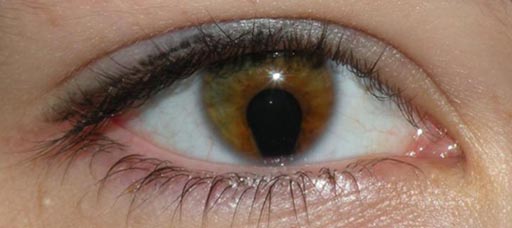Recurrent Mutation Linked to Childhood Blindness
By LabMedica International staff writers
Posted on 29 May 2017
Researchers have identified a genetic mutation that contributes to the sight loss that occurs in children with ocular coloboma, a developmental defect that causes part of the eye to be missing at birth. The findings shed light on its causes and help explain how genes contribute to development of the eye.Posted on 29 May 2017
Ocular coloboma is a developmental defect in optic fissure closure and is a common cause of severe congenital visual impairment. Coloboma can have profound, devastating effects on visual ability, accounting for up to 10% of all childhood blindness. It can cause a distinctive keyhole-shaped pupil as it commonly results in a missing segment in the iris. However, coloboma is very variable and therefore likely to be caused by a number of genes. Few genetic causes have so far been found to help explain the cause of coloboma.

Image: Scientists have identified a genetic mutation that contributes to sight loss in children (Photo courtesy of the University of Edinburgh).
The research team, led by Dr. Joe Rainger University of Edinburgh, worked with 12 families, studying the DNA of children with coloboma and their unaffected parents. Using state-of-the-art genetic screening by whole exome sequencing, the scientists revealed mutations in 10 genes, 3 of which were linked to activity of one molecule: actin, important for various vital cell functions, including in defining cell shape and structure via maintenance of the cytoskeleton.
Targeted gene sequencing was then carried out on a further 380 people with coloboma. This showed that one of the mutations – a specific alteration in the gene ACTG1 – recurred across a number of those tested. The scientists edited this ACTG1 mutation into a line of mice using cutting-edge CRISPR/Cas9 gene-editing technology, and found that it had severe effects on actin function.
The newly identified mutations are thought to affect how actin binds to other proteins and on actin stability, which could severely affect development of the eye in the womb. The findings add knowledge to our understanding of coloboma onset as well as on the importance of actin to eye development.
The study, by Rainger J et al, was published May 11, 2017, in the journal Human Mutation.













